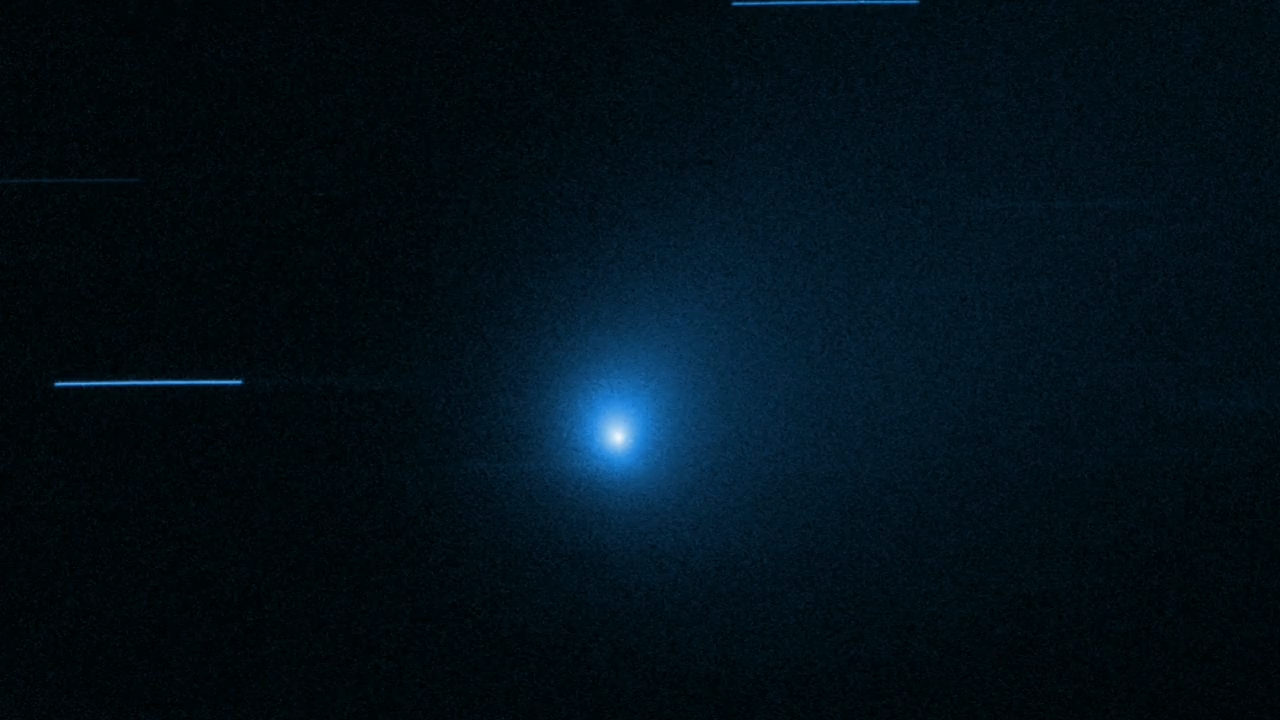1 min read
Comet 2I/Borisov

Hubble Tracks Comet Borisov’s Flight Through Solar System
This time-lapse Hubble movie shows comet Borisov's journey through our solar system. Background stars appear as streaks of light because Hubble is tracking the moving comet. The amount of stars changes as the comet travels from low- to high-density stellar regions in the background.
The video was created using 37 images taken between Dec. 9, 2019, and Feb. 24, 2020. The total observation time for all of the images was three to four hours. However, the observations were made on five separate days: Dec. 9, 2019; Dec. 23, 2019; Jan. 3, 2020; Jan. 29, 2020; and Feb. 24, 2020.
The video is composed of images taken in visible light by Hubble's Wide Field Camera 3.
About the Object
- DistanceDistanceThe physical distance from Earth to the astronomical object. Distances within our solar system are usually measured in Astronomical Units (AU). Distances between stars are usually measured in light-years. Interstellar distances can also be measured in parsecs.At the time of observations, the comet was 1.99 AU from Earth (185 million miles).
About the Data
- Data DescriptionData DescriptionProposal: A description of the observations, their scientific justification, and the links to the data available in the science archive.
Science Team: The astronomers who planned the observations and analyzed the data. "PI" refers to the Principal Investigator.HST observations include those from programs 16009 (D. Jewitt). - InstrumentInstrumentThe science instrument used to produce the data.WFC3/UVIS
- Exposure DatesExposure DatesThe date(s) that the telescope made its observations and the total exposure time.9 Dec 2019
- FiltersFiltersThe camera filters that were used in the science observations.F350LP
- Object NameObject NameA name or catalog number that astronomers use to identify an astronomical object.Comet 2I/Borisov
- Object DescriptionObject DescriptionThe type of astronomical object.Interstellar comet
- Release DateApril 20, 2020
- Science ReleaseHubble Probes Alien Comet’s Chemical Makeup
- Credit

This image is an exposure acquired by the WFC3 instrument on the Hubble Space Telescope. The color results from assigning the color blue to a monochromatic (grayscale) image.
Related Images & Videos

Comet 2I/Borisov Time-Lapse
Hubble Tracks Comet Borisov’s Flight Through Solar System This time-lapse Hubble movie shows comet Borisov's journey through our solar system. Background stars appear as streaks of light because Hubble is tracking the moving comet. The amount of stars changes as the comet...
Share
Details
Claire Andreoli
NASA’s Goddard Space Flight Center
Greenbelt, Maryland
claire.andreoli@nasa.gov




























